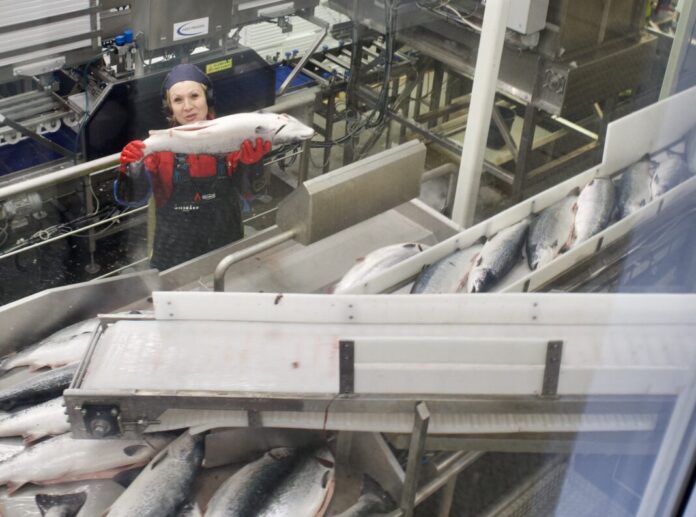Breaks over EUR 7/kg in record time.
It is the last full shopping week in 2021 – and the salmon price is rising towards the year’s highest levels.
“They are talking about 70 kroner (EUR 7). That’s where it is. 70 kroner (EUR 7) for 3-4 and 71 kroner (EUR 7.1) for 4+ kg. Everything we have bought confirms the same price. It seems that everyone is happy only when they see the number 7. It’s amazing, it’s exciting. So we’re happy. We’ve finished buying, have bought everything at the same price.[factbox]
“It was settled, that price, already yesterday. Now it’s just to sell on at that price. Not everyone takes, so it will be exciting to see,” he added.
Rapid
Several exporters and fish farmers refer to prices around EUR 7, for fish of three to six kilos.
“But there are huge volumes that will go up next week,” warned an exporter after the rapid rise in prices.
For the fish farmers, the Christmas party has started now.
“We had a target price yesterday afternoon of 68, 70, 72 kroner (EUR 6.8-7.2) for three to six kilos. And we got it that even in Poland this morning. So now customers say 74 kroner (EUR 7.4) at 3-4, 76 kroner (EUR 7.6) at 4-5, I hear customers can confirm 79 kroner (EUR 7.9) at 5-6 and big fish at 80 kroner (EUR 8). If you get it out of Europe, it is 85 kroner (EUR 8.5),” said a fish farmer to SalmonBusiness.
Steep climb
The leap is huge, as last Friday the price of salmon traded around EUR 6.
“Last Friday, there was nervousness in food service, to what extent restaurants should close, so the journey to up to the 70s took place in four to five days. It is very rare to get 13-14 kroner up in such a short time. I can’t remember seeing such a steep climb before,” he said.
He is confident on what pulls up the price.
“It is retail and fresh [markets] that pull this. Evening consumption in restaurants is not about salmon, neither in Norway nor abroad. There is moderate harvesting in Norway and to some extent also in Chile, to the extent that we can call it a global market,” he said and added that the cold winter results in low feeding and growth.

